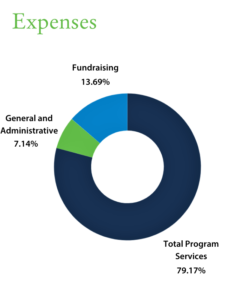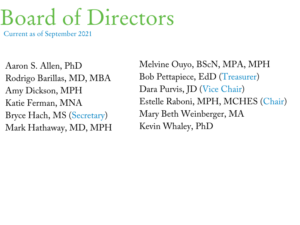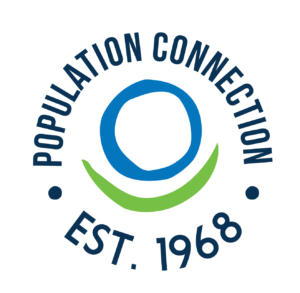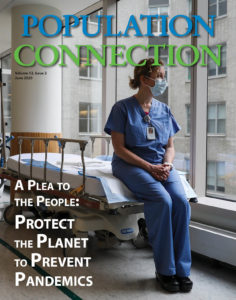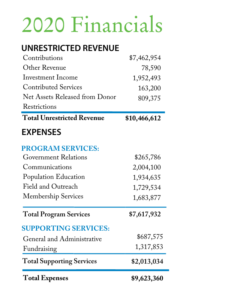
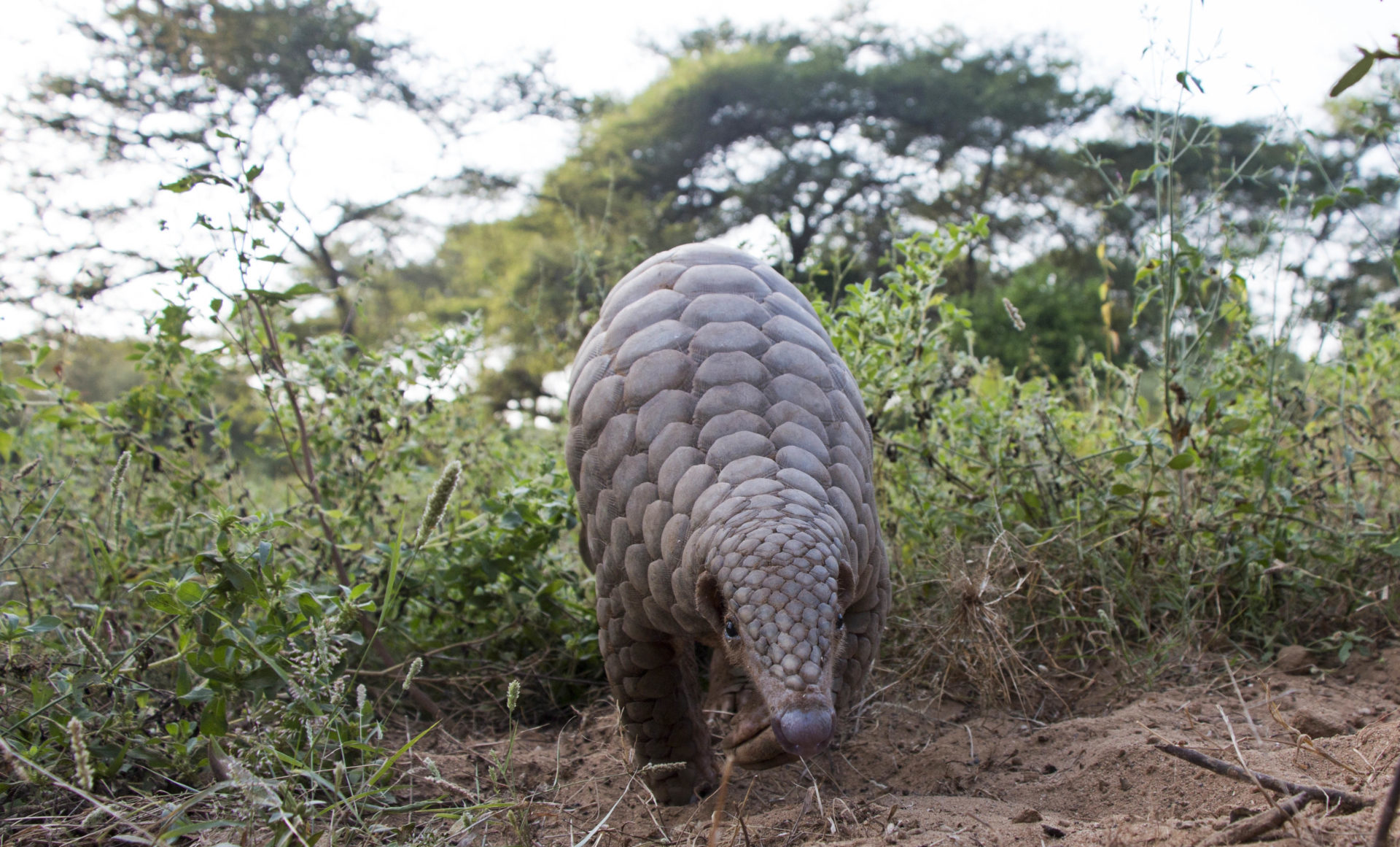
The Story of the Year: COVID-19 Highlights Dangers of Rapid Population Growth
2020 was the year we discovered just how viciously our abuse of wildlife could come back to bite us. By the end of 2020, COVID-19 had killed nearly 2 million people and infected more than 92 million people across the world.
As the true scope of the pandemic became evident, we made the decision to dedicate the June 2020 issue of our quarterly magazine to exploring how rapid human population growth makes public health catastrophes like COVID-19 more likely. Click the link to the right to read the issue.
We humans have pushed our way into all types of habitats, forcing interactions with wildlife that harm them and us. We’ve gathered up exotic species that people will pay top dollar to eat, and stacked them in cages to bleed and defecate on each other in wet markets. And we’ve farmed them in cruel, unsanitary conditions that allow livestock feces to find its way into our food and water.
Why are we pushing into wildlife habitats? Because we are driven to use more space to build communities, more natural resources to sustain our lives and livelihoods, more wild game to feed more people. In short, because of rapid human population growth. Which is the same reason we’ve taken to farming livestock in such horrific conditions. We’re no longer eating meat produced at our local family-run farms. We’re eating meat that’s been factory farmed, sometimes thousands of miles away, in huge, depressing feedlots—because that’s the only way to produce enough of it for our massive global population, which still grows by 80 million people a year.
In 2021, as we get vaccinated against COVID-19 and try to resume some semblance of “normal” life, let’s resolve not to fall prey to new zoonotic pathogens again in the future. Let’s prevent another coronavirus catastrophe via population stabilization, which will reduce pressure on wildlife habitats and lessen livestock farming demands. Let’s minimize human contact with species that carry viruses that are deadly to people.

Connecting Climate Change to Population
Population Connection draws the links between global population growth and the countless environmental challenges facing us—we educate people of all ages and motivate them to take action. We’ve made steady progress over the past 50+ years, educating young people on population concepts and advocating for expanded access to voluntary family planning programs for people everywhere. Nearly 100 countries have achieved replacement rate fertility since our founding in 1968—up from four countries at that time.
But we must accelerate our progress to solve the climate crisis.
Global warming poses unprecedented threats to humanity. Little has been done to reduce global carbon dioxide emissions despite 40 years of scientists’ warnings, with C02 emissions soaring from just over 10 gigatons per year in 1979 to nearly 35 gigatons per year today. While wealthy nations must account for historical emissions and the highest current per capita emissions, research indicates that slower future population growth “could reduce global emissions by 40% or more in the long-term.”
As people in low-income countries achieve improvements in their standards of living, those countries’ carbon footprints will grow—both from a necessary rise in per capita emissions and from population growth. And in middle-income countries—which make up the bulk of the world’s population—living standards are rising as well, as they should. But with development comes higher emissions.
Nearly half of the world’s pregnancies are unintended, and 218 million women in the developing world want to prevent pregnancy but aren’t using modern contraceptives. To lessen the impacts of global population growth on carbon emissions and biodiversity loss, we must implement human rights-based policies to extend family planning and reproductive health care to people worldwide—including in the United States, where per capita emissions are among the highest in the world and where 45% of pregnancies are unintended.
Now is the time to ensure voluntary family planning options for all, and to provide universal education for girls. Together, these interventions to ensure the full autonomy of girls and women could have a greater impact on carbon emissions than any other, single tactic.
Population Connection’s campaign brings population stabilization into the public discourse about climate change mitigation and adaptation, adding momentum to achieve a dramatic increase in access to family planning and reproductive health care programs for people around the world. In this way, we can lessen the impacts of global population growth on C02 emissions and biodiversity loss, while increasing vulnerable populations’ capacity for climate change adaptation and resilience.
The core of this project consists of a growing library of slide presentations, case studies, and recommended readings geared towards college classrooms, but available to the public at large.
Since stay-at-home orders halted all travel for Population Connection’s staff in early spring, we shifted to a virtual presentation format. We invited over 36,000 professors on relevant subjects to use these materials and host Communications Manager Hannah Evans for live presentations on these topics directly to their students. She spoke to 16 college classrooms throughout 2020.
Hannah also hosted a four-part virtual series on climate change, with over 100 people participating. 30 took part in at least three of these sessions, earning the title of “Population Ambassador.”
In addition, several hundred people downloaded the available materials throughout the year, including 117 college professors. These downloads came from all over the world, including Hungary, Uganda, Australia, India, Nigeria, and Spain!
We’re also employing social media marketing to increase awareness of the many connections between population and climate change. We shared more than 60 posts on population and climate change via Instagram and 540 posts via Twitter throughout the year. On Twitter, we garnered 73,000 impressions on our climate change-related posts.
We will continue sharing the critical information that empowering women and girls through girls’ education and full access to family planning options is one key way to address climate change. In fact, these interventions, combined, form the second most powerful way to tackle climate change—and we don’t have a moment to lose! For more information, please contact Hannah Evans at hevans@popconnect.org.
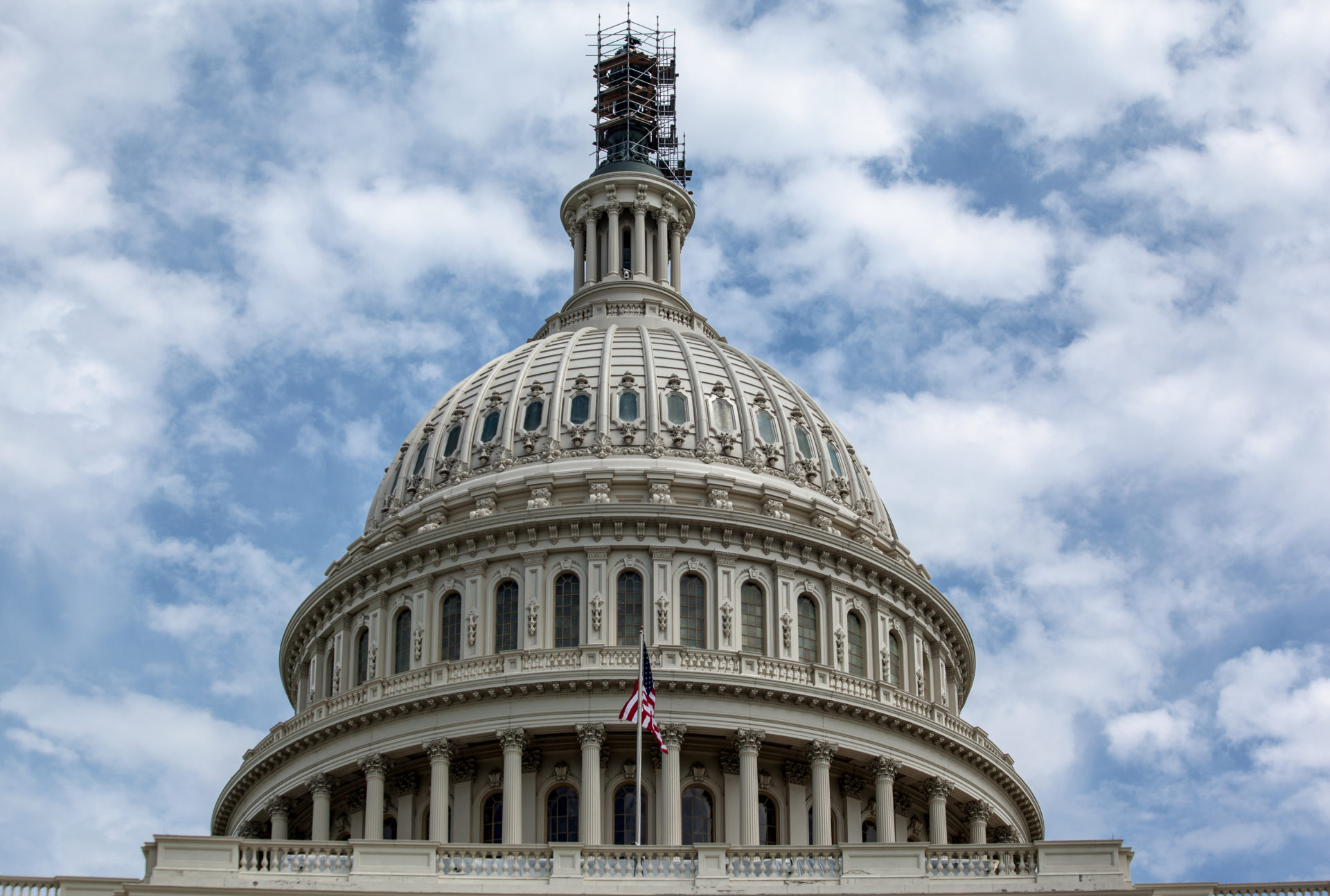
Advocacy Update
The year’s initial stay-at-home orders came only a couple weeks before our annual Capitol Hill Days event, which was scheduled for March 27-30, 2020. Unwilling to let our commitment to advocating for reproductive rights flag, our #Fight4HER team took the fight online! The CHD Digital Weekend of Action, a joint event with Population Connection Action Fund, consisted of a series of virtual sessions with organizing experts to discuss reproductive health and rights advocacy. To open the event, Population Connection Action Fund hosted a Twitter “rally,” with over 2,000 participants that reached over 9.2 million people!
On the final day of the CHD Digital Weekend of Action, activists flooded congressional offices with emails, tweets, and phone calls to demand access to comprehensive reproductive health care around the world. In all, 980 advocates made 3,224 legislator connections. Some Population Connection advocates even got the chance to speak to their representative directly: Rep. Susie Lee (D-NV) joined our Nevada activists for their virtual meeting! Sen. Dianne Feinstein (D-CA), Rep. Annie Kuster (D-NH), and Rep. Ann Kirkpatrick(D-AZ) tweeted out their support for the #Fight4HER to repeal the Global Gag Rule.
During the summer of 2020, over 100 fellows from #Fight4HER target states (AZ, CA, CO, ME, NC, NH, NV, OH, PA) participated in our third annual Summer of HER program. Throughout the summer, fellows:
- Learned relational organizing, advocacy, and social media skills;
- Organized, recruited for, and attended three national volunteer calls;
- Participated in get-out-the-vote efforts for family planning champions; and
- Recruited activists to attend the virtual Summer of HER Summits.
In August, the digital Summer of HER Summits featured a day of workshops and trainings focused on effective advocacy and organizing skills. Split by Eastern and Western states, each summit featured breakouts by #Fight4HER target states, where activists heard from family planning champions and allies in Congress about why the #Fight4HER matters to them. Collectively, 422 activists across the country attended! At the end of the summits, the #Fight4HER team held a Twitter rally that garnered 954,806 impressions and got the #Fight4HER hashtag trending!
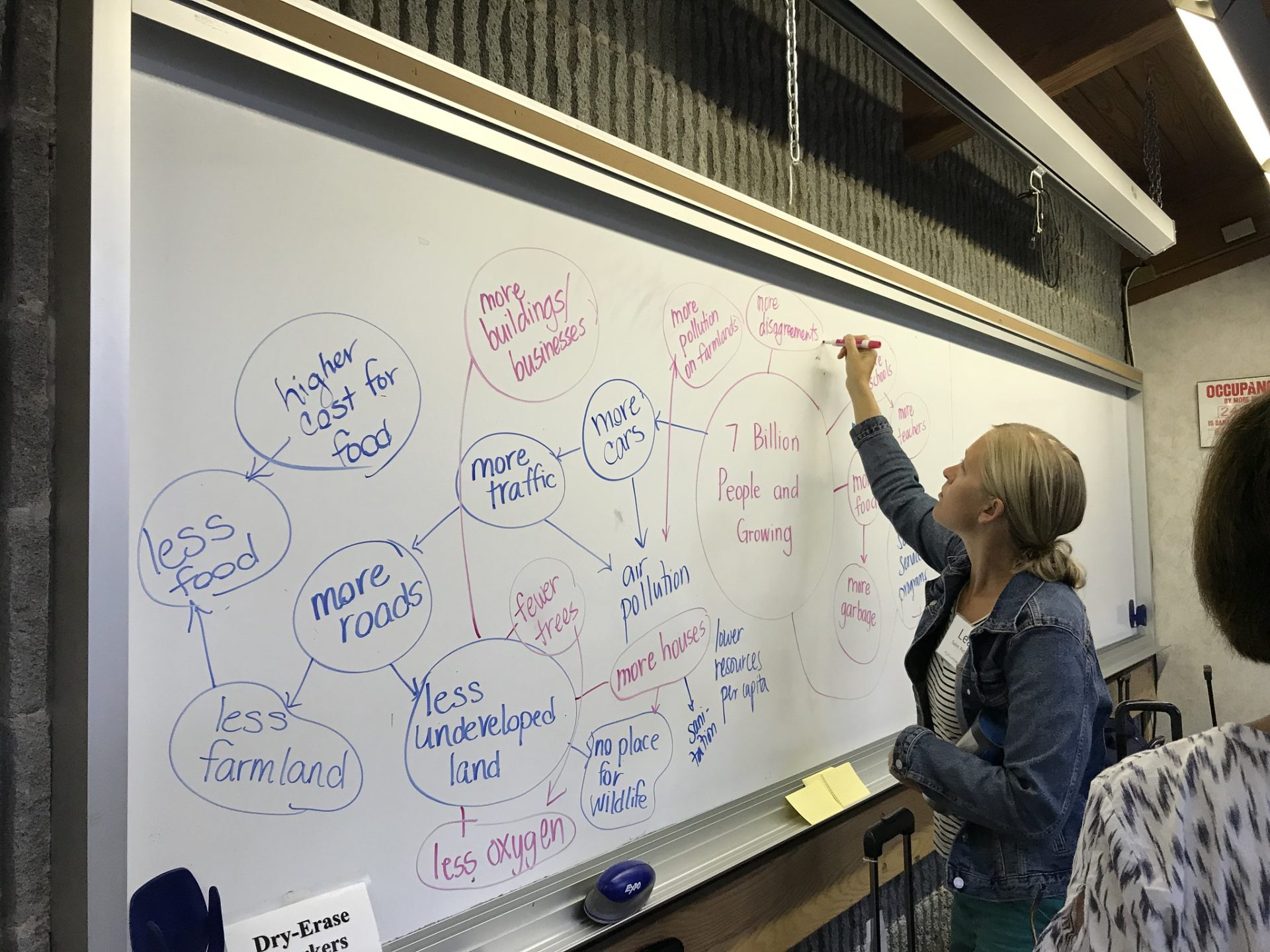
Population Education
Population Education is all about people—how many of us there are, how we shape the world around us, and how we interact with each other. Since 1975, our one-of-a-kind PopEd program has empowered young people to become future leaders for a more sustainable world by informing them about global population trends and human impacts. Through our K-12 materials, we encourage students to consider population pressures and to think critically about how they interact with the world around them.
Because of you, PopEd reaches three million young people annually. We’re the only nationwide program dedicated to providing professional training and resources for K-12 educators to teach population-oriented curricula in their classrooms. Through innovative, fun, and dynamic lesson plans and activities, students of all grade levels can make the vital “population connection.”
Our commitment to inspire, inform, and empower young people prepares them for civic engagement and helps them see the value in striving for a sustainable planet for future generations.
One major highlight of PopEd’s program last year was the launch of a new curriculum launched to coincide with the 2020 Decennial Census. The lessons and materials focus on U.S. demographics and other trends—such as health, politics, and the environment—that shape our country. The last U.S.-focused curriculum was released in 2006, when the nation hit the 300 million population milestone. These curricula ensure that today’s young generation understand where we’ve come from as a country in order to facilitate a more sustainable future.
Lessons highlight population growth and settlement patterns, and also explore many other aspects of American life, such family size, education, health, immigration, gender roles, political representation, and environmental policies. The curriculum includes 14 lessons, six student readings, and a set of six infographics for teachers to incorporate into their presentations.
You can learn more and see all of the components that are currently available on PopEd’s website.
World of 7 Billion Student Video Contest
First held in 2011, our annual World of 7 Billion student video contest is now a perennially popular event that fields entries from all over the globe! Each year, PopEd’s staff selects three topics designed to help middle and high school students make the connection between human population growth and some of the most pressing issues facing our planet. The 2019-2020 contest topics were:
- Improving climate resiliency
- Ensuring economic opportunities
- Sustaining water systems
The high school winners for each category are featured below. You can see all of the winning entries on the World of 7 Billion website here! These winners were chosen from over 2,500 entries submitted by students from 35 countries and 46 U.S. states and territories. We hope you enjoy viewing these videos as much as we did!
Lexis is in 11th grade and attends Tiyan High School in Barrigada, Guam. She decided to focus on Improving Climate Resiliency because she already had the most knowledge on that topic, and decided to focus on agricultural productivity “because the ever growing population is expected to exacerbate world hunger,” she said, adding, “What had surprised me was the projected 70% growth of agricultural productivity needed to keep up with the population in the next decades.” After doing more research, she learned that agricultural flooding is one of the leading causes of declining crop production. “I wanted to find a reasonable solution that farmers can implement on their own within their budget and land needs,” she said, which is why she focused on cover crops as a solution.
After high school, Lexis wants to attend Carnegie Mellon University to study computer science and software engineering. “I believe the future is in technology, and I want to do my part in advancing the tech world and making it accessible to everyone.”
Sophia Greenberg is an 11th grader at Coppell High School in Coppell, Texas. She learned of the video contest after receiving the assignment as a part of the population unit in her IB program’s Environmental Science class. Of the three contest topics, she chose to submit a video in the Ensuring Economic Opportunities category after seeing the Microfinance subcategory, a subject she is familiar with from research projects she has conducted in the past.
Sophia enjoys serving as liaison of the Coppell High School Arts Council. She is also a Girl Scout, enjoys the outdoors, and has recently gotten into gardening. She has a vegetable plot at home with lots of tomatoes and is currently trying to determine how to grow a full tomato from seed-to-harvest without a bird or squirrel getting to it first!
Bryan is a senior at Arnold O. Beckman High School in Tustin, California. He found out about the contest when it was assigned in his AP Environmental Science class. Bryan decided to create a video to address Sustaining Water Systems because of his interest in public health, especially now as we’re seeing how the spread of disease impacts the global population. He said, “When I looked at the other topics in relation to water systems, I thought sanitation infrastructure is a big global health issue that requires a lot of attention which it often does not get.” While researching global sanitation, Bryan made the connection between the spread of infectious diseases and population density. His research also highlighted the global need for populations to work together to achieve sustainability. “We only have one planet, so we all need to work together by aiding and assisting each other.”
Bryan has two older sisters who both study public health and have been Bryan’s inspiration to pursue global health studies. Bryan plans to donate part of his prize money to a local animal shelter. In the fall, he hopes to follow in his sisters’ footsteps and begin his public health studies at UC Irvine.
Partnership Spotlights
Population Connection is proud to work with a small but growing number of partner organizations working on the ground in areas of the world most in need of access to public health and family planning services. These incredible organizations have a reach and impact far larger than their size suggests, and we are honored to work alongside them for a more just and sustainable future for all of our planet’s inhabitants.
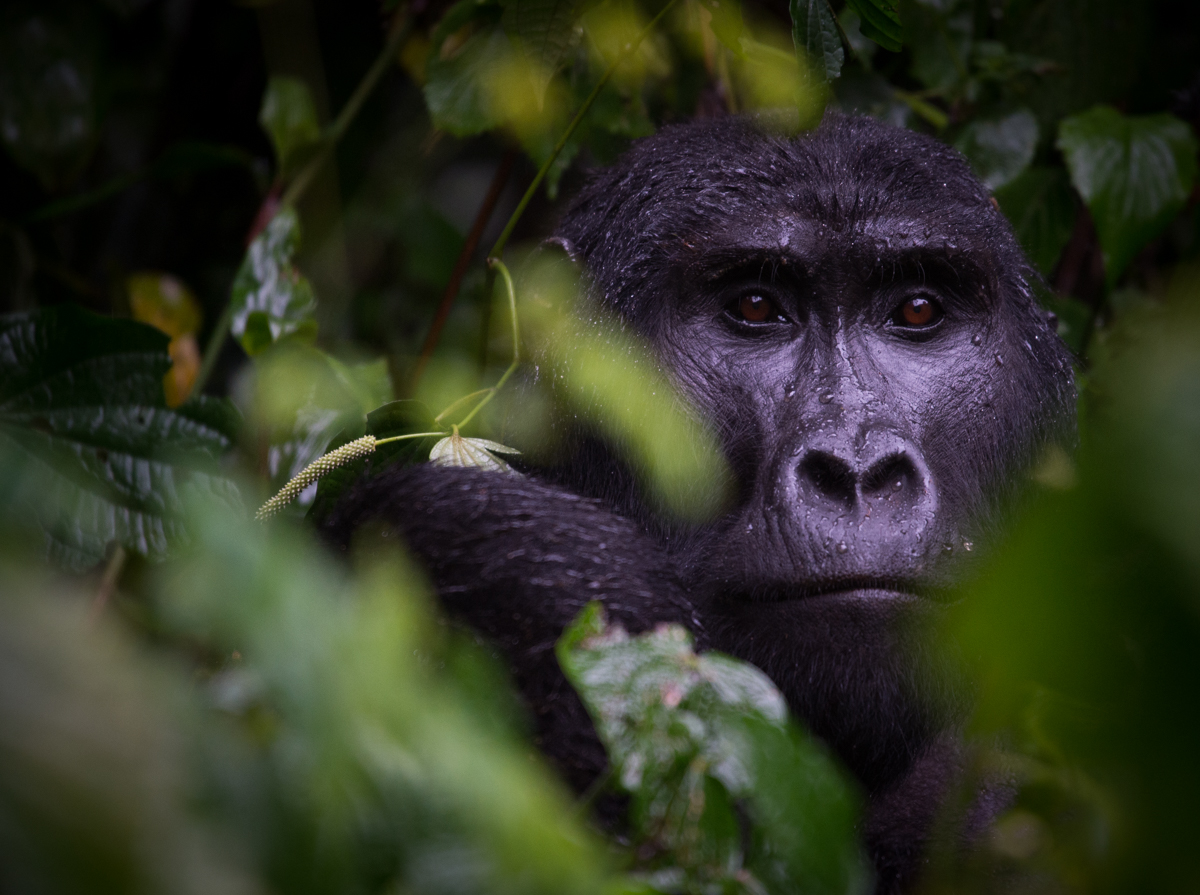
Conservation Through Public Health
One of Population Connection’s earliest partners was Conservation Through Public Health (CTPH). CTPH, based in Uganda, is an award-winning leader in gorilla and wildlife conservation. CTPH’s vital mission is to focus on the health and interspecies relationships of wildlife, humans, and livestock in and around East Africa’s protected areas.
The organization works to improve the health and livelihoods of people by preventing and controlling disease transmission between closely genetically related species such as people and gorillas, cattle, and buffalo. One of the ways they do this is by expanding voluntary access to family planning to promote a sustainable balance between humans and gorillas.
Wildlife veterinarian and CTPH founder and CEO Dr. Gladys Kalema-Zikusoka (also known as “Dr. Gladys”) started CTPH in 2003 to stop the spread of diseases passing between people, wildlife, and livestock. Since then, CTPH has worked to reduce people’s dependence on protected lands and the wildlife that reside there, improving their health and wellbeing in the process.
CTPH got some great news during the summer of 2020, when two babies were born (in a single week!) to two different mountain gorilla groups in the Bwindi Impenetrable National Park.
According to the Uganda Wildlife Authority, one baby gorilla was born to Nyampazi of the Mubare gorilla family, located in the Buhoma sector of Bwindi. The Mubare family leader is Silverback Maraya.
The second baby was born to Katoto of the Oruzogo gorilla family. Katoto was found nursing the little one on July 25, 2020. This birth marks Katoto’s first baby. Her family is led by Silverback Kagaanga.
The birth of these two babies raises the total number of gorillas in the Mubare and Oruzogo families to 9 and 15 members, respectively. It’s estimated that the global total number of endangered mountain gorillas is now 1,063, with 459 found in Bwindi Impenetrable National Park. Other mountain gorilla populations are found in Volcanoes National Park in Rwanda and Virunga National Park in the Democratic Republic of Congo.
CTPH has been raising concern about the risk of transmission of this horrible disease to gorillas from humans who interact with them both inside and outside national parks.
Because these endangered gorilla species live in such close-knit family groups, COVID-19 infection poses an enormous danger, with the potential to completely wipe out family groups or sub-species.
As a result, CTPH has prioritized efforts to prevent and mitigate the spread of COVID-19 infection both among people in the communities surrounding mountain gorilla habitats, and from humans to gorillas.
CTPH is also working with the Uganda Wildlife Authority to test mountain gorillas for SARS CoV-2 through non-invasive fecal sample collection, to enable an early warning system should cross-over infection occur.
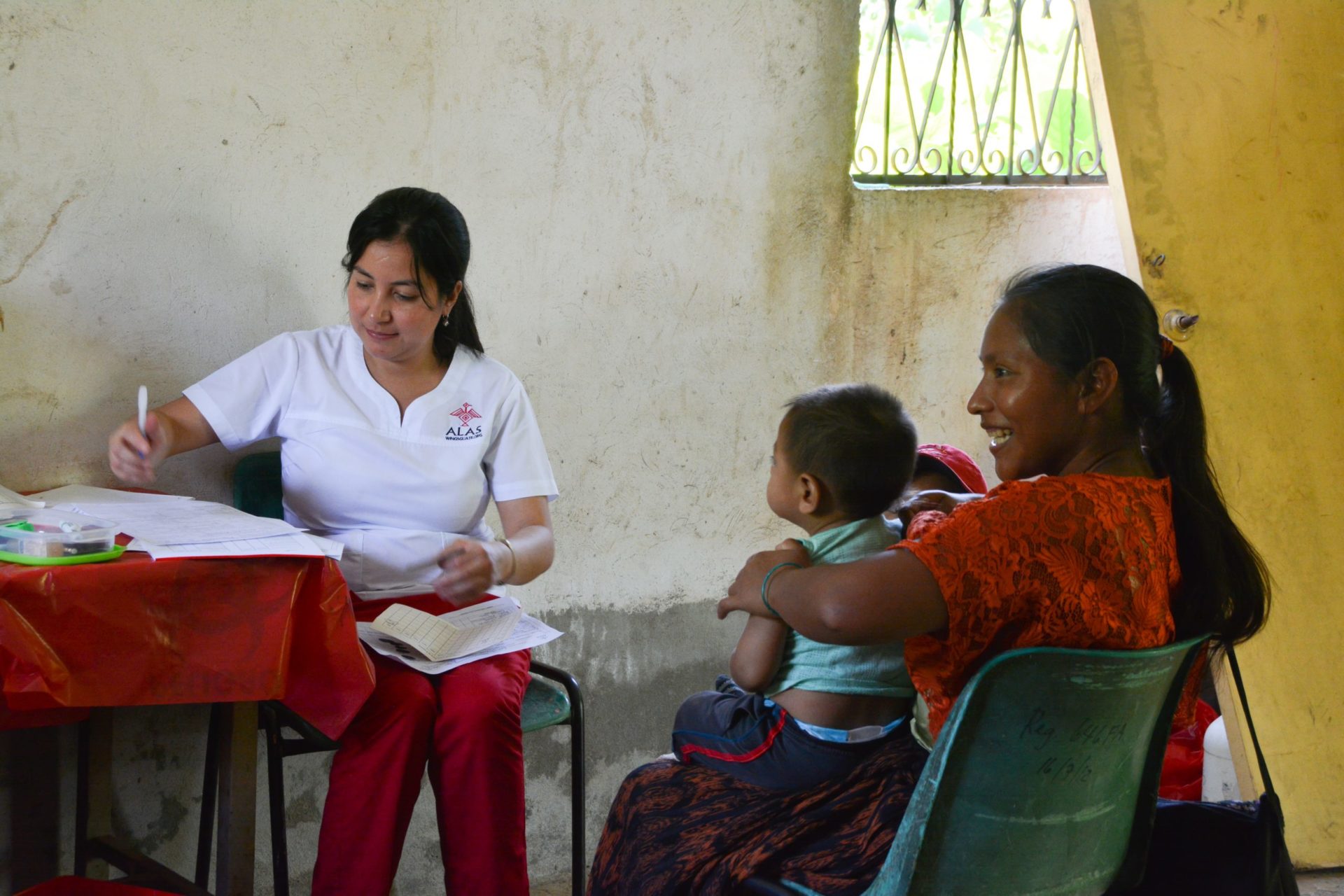
WINGS Guatemala
WINGS is a non-profit organization providing quality reproductive health education and services, with a focus on low-income, rural, indigenous Guatemalans. Since its founding in 2001, WINGS has provided 315,495 youth, women, and men with sexual and reproductive health information and services. The organization estimates that it has prevented 286,625 unintended pregnancies, 1,614 infant deaths, and 103 maternal deaths.
About 75% of Guatemala’s indigenous population lives in poverty. And about 92% of WINGS patients are in rural areas, with one in three women lacking access to reproductive health services.
By coming to patients at the community level, WINGS narrows the gaps in reproductive health care that are not met by national resources. The organization ensures access to quality, affordable reproductive health services using a network of volunteer health promoters, mobile medical units, and stationary clinics. This network provides educational talks, private counseling, short and long-acting reversible contraception, cervical cancer screening with VIA (Visual Inspection with Acetic Acid)/cryotherapy, and permanent sterilization procedures.
Before COVID-19 forced WINGS to pause much of their work, they were having a productive 2020. They hosted 77 total clinics through their service provision program. In January, February, and March, they provided 527 tubal ligations, 86 vasectomies, 133 IUDs, and 503 subdermal hormonal implants. In addition to the 1,098 methods provided during this time, 667 women were screened for cervical cancer. And in mid-January and mid-March, they held a week-long all-staff training in Antigua.
Youth trainer staff have held training sessions with youth leaders via WhatsApp, allowing the youth leaders (ages 13–19) to bring accurate reproductive health information and service referrals to their peers through community-based activities. Nursing staff that speak indigenous languages have volunteered to be part of a nationwide resource to respond to callers needing resources and information about COVID-19.
COVID-19 really impacted the work of WINGS, requiring staff to adjust how they provide services, information, and education to their clients. But the organization has risen to the challenge. In just one example, pre-COVID-19, WINGS staff would reach potential patients going door to door. Now they connect with potential patients through WhatsApp and Facebook.
While the pandemic limits the procedures WINGS can offer, it’s increased the staff’s use of technology, including an important transition from hand-written to electronic medical records. Being able to use more technology, despite the technological challenges common in rural areas, has proved invaluable during these unprecedented times.
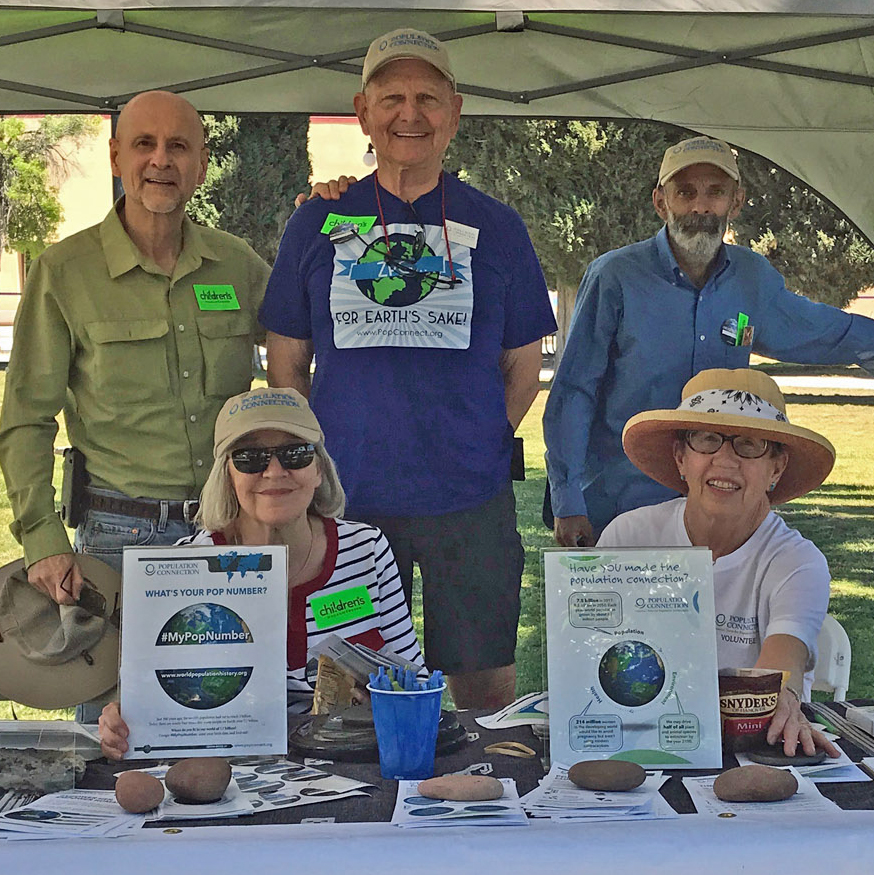
Membership Relations
In lieu of in-person events, Membership Relations kept members connected with our work by hosting a virtual speaker series with experts in the fields of population, reproductive health and rights, and conservation.
2020 marked the 50th anniversary of Earth Day, and Population Connection members were eager to celebrate! Over 90 people signed up to follow daily tasks that help decrease our collective impact on the environment such as saying no to single-use plastic and reducing water usage. The challenge included tuning in for live presentations from President John Seager and Communications Manager Hannah Evans. John discussed how population growth and pandemics are interwoven, and Hannah highlighted the connections between climate change and population growth. Collectively, over 120 members participated in these live streams!
You can see the complete list of the daily “eco challenges” here!
Our summer speaker series included presentations from the leaders of two of our partner organizations, Conservation Through Public Health and WINGS Guatemala. Additionally, Communications Manager Hannah Evans presented a four-week course on population and climate change. During the month of August, Hannah held weekly sessions that explored different ways that population, health, and the environment intersect. Each session covered a specific topic to help deepen attendees’ understanding of how population dynamics relate to global issues like sustainable development, zoonotic diseases, access to health care, and, of course, climate change. Over 120 members took part in this interactive course. At the end of the course, nearly 50 members who attended three or more sessions became “Population Ambassadors,” volunteers specially recognized for going above and beyond in furthering their knowledge about population issues.
The fall speaker series ran from October to December and featured Mark Hathaway, a member of Population Connection’s Board of Directors, Pape Gaye, President Emeritus of IntraHealth International, and members of our Advocacy and PopEd staffs. We held seven speaker sessions in total, and over 650 members and volunteers attended one or more session!
More information about speakers and recordings of their presentations are available to view on our Summer Speakers Series and Fall Speaker Series pages.
